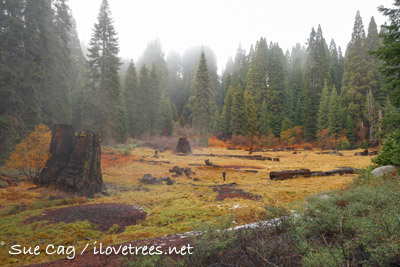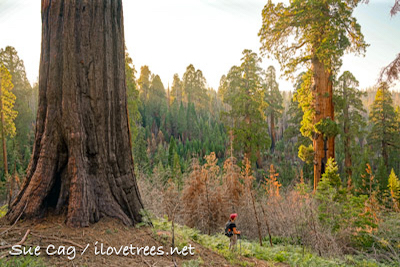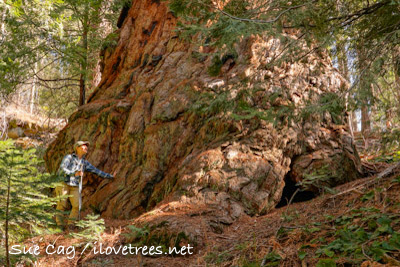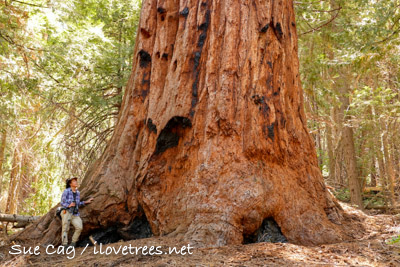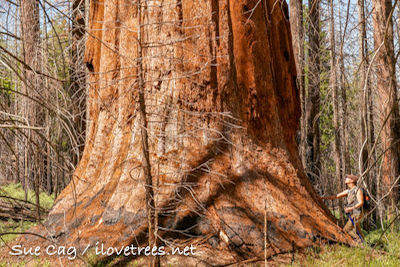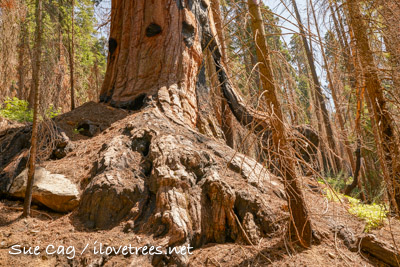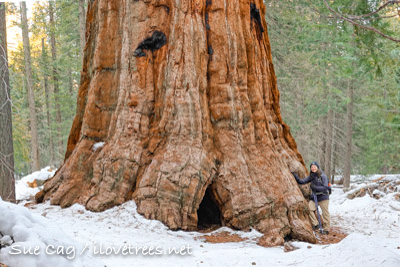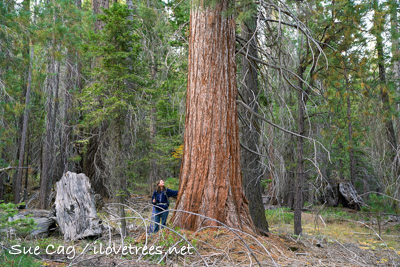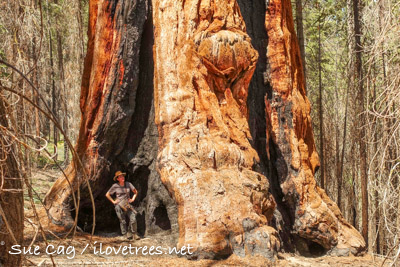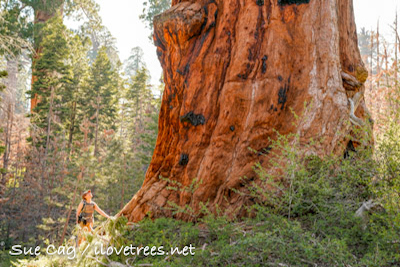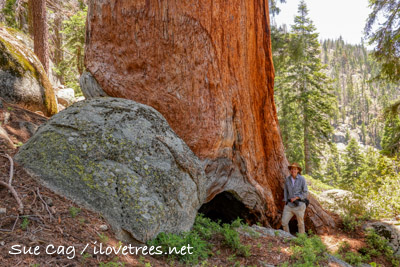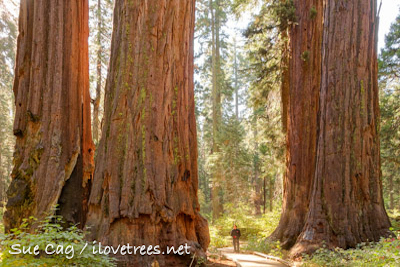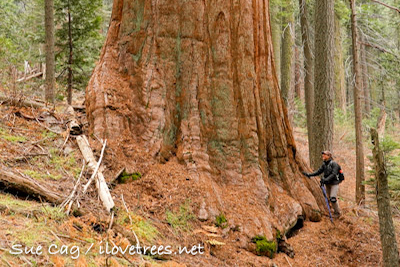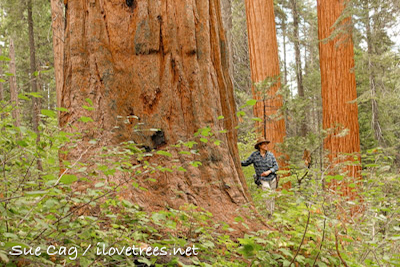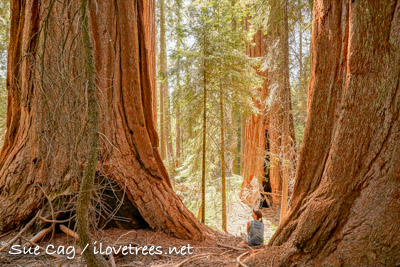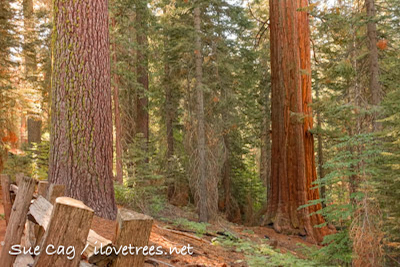I am working on a writing and photography project profiling all of the giant sequoia groves of California. My goal is to spend time in each and to document the forests as they appear today. I have explored all publicly accessible sequoia groves, most of them multiple times. My writing recounts my excursions in detail and includes accompanying photographs. I attempt to capture the characteristics of individual trees, general sequoia age classes and sizes, topography, composition of companion conifers, understory, and fire evidence in each grove. I have not posted or published any of these writings yet because I am putting them together in a comprehensive book.
Instead of following millions of others on well-worn long distance trails racking up miles while all the beauty of the world goes by as a blur, I want to take the time to truly look and listen, to live and breathe the forest, to appreciate each sequoia grove, and to greet individual trees that have become familiar to me.
DISCLAIMER: Some of these groves are trail-less and inaccessible. Do not attempt to reach unfamiliar groves.
NOTE: Grove names explained at the bottom of this page.
List of Sequoia Groves:
Note: Two groves (Parker Peak and North Cold Spring) are inaccessible on Tule River Indian Reservation land.
Agnew Grove, Alder Creek Grove, Atwell Mill-East Fork Grove, Bearskin Grove, Big Stump Grove, Black Mountain Grove, Board Camp Grove, Boulder Creek Grove, Burro Creek Grove, Cahoon Creek Grove, Case Mountain Grove, Castle Creek Grove, Cherry Gap Grove, Coffeepot Canyon Grove, Converse Basin Grove (including Cabin Creek), Cunningham Grove, Deer Creek Grove, Deer Meadow Grove, Dennison Grove, Devils Canyon Grove, Eden Creek Grove, Evans Grove, Forgotten Grove, Freeman Creek Grove, Garfield Grove, Giant Forest, Grant Grove, Homers Nose Grove, Horse Creek Grove, Indian Basin Grove, Kennedy Grove, Landslide Grove, Little Boulder Creek Grove, Lockwood Grove, Long Meadow Grove, Lost Grove, Maggie Mountain Grove, Mariposa Grove, McIntyre Grove (including Belknap, Wheel Meadow, Carr Wilson), McKinley Grove, Merced Grove, Monarch Grove, Mountain Home Grove, Muir Grove, Nelder Grove, New Oriole Grove, North Calaveras Grove, Oriole Grove, Packsaddle Grove, Peyrone Grove, Pine Ridge Grove, Placer County Grove, Red Hill Grove, Redwood Meadow Grove, Redwood Mountain Grove, Sequoia Creek Grove, Silver Creek Grove, Skagway Grove, South Calaveras Grove, South Fork Grove, South Peyrone Grove, Starvation Creek Grove, Surprise Grove, Suwanee Grove, Tuolumne Grove, Wishon Grove.
Superfluous or outdated grove names:
Belknap is a section of McIntyre Grove
Belknap Complex is the same as McIntyre Grove
Burton doesn’t exist
Cabin Creek is section of Converse Basin Grove
Carr-Wilson is a section of McIntyre Grove
Cedar Creek (or Cedar Flat) is the bottom of Homers Nose Grove (sequoias are contiguous from the creek to the top of the grove). This name has also been erroneously used to refer to Board Camp Grove.
Clough Cave is an outlier of Garfield
Dillonwood is a section of the larger Garfield-Dillonwood Grove (the sequoias are contiguous on both sides of Dennison Ridge)
Dinky (or Dinky Creek) is McKinley Grove
Douglass is an outlier of Oriole Grove
East Fork is part of Atwell-East Fork Grove
Fresno is Nelder Grove
Horseshoe Bend is part of Evans Grove
Little Redwood Meadow is a section of Redwood Meadow Grove
Middle Tule is a contiguous part of Mountain Home Grove
North Grove is Placer County Grove
Powderhorn doesn’t exist – the name either refers to the east section of Starvation Creek or an outlier of Packsaddle
Putnam-Francis is an outlier of Garfield
Redwood Creek is part of Atwell-East Fork Grove
Squirrel Creek refers to two sequoias by the road at the bottom of Oriole Grove (go up the creek and you’ll find many giant sequoia stumps and the rest of the grove above).
Stanislaus Grove is Calaveras
Tenmile doesn’t exist
Upper Tule is part of Mountain Home Grove
Wheel Meadow is a contiguous section of McIntyre Grove
Windy Gulch is part of Evans Grove
Why do superfluous and/or inaccurate grove names persist? Partly due to colloquialisms, but also due to bureaucracy. These names were used in research, data, and documentation by the NPS, USFS, and other organizations. Correcting them can cause problems.
![]() About the Author:
About the Author:
Sue Cag is a musician, artist, writer, photographer, and conservationist.
All photos and video by Sue Cag. All Rights Reserved. Photos and video may not be used without permission.





